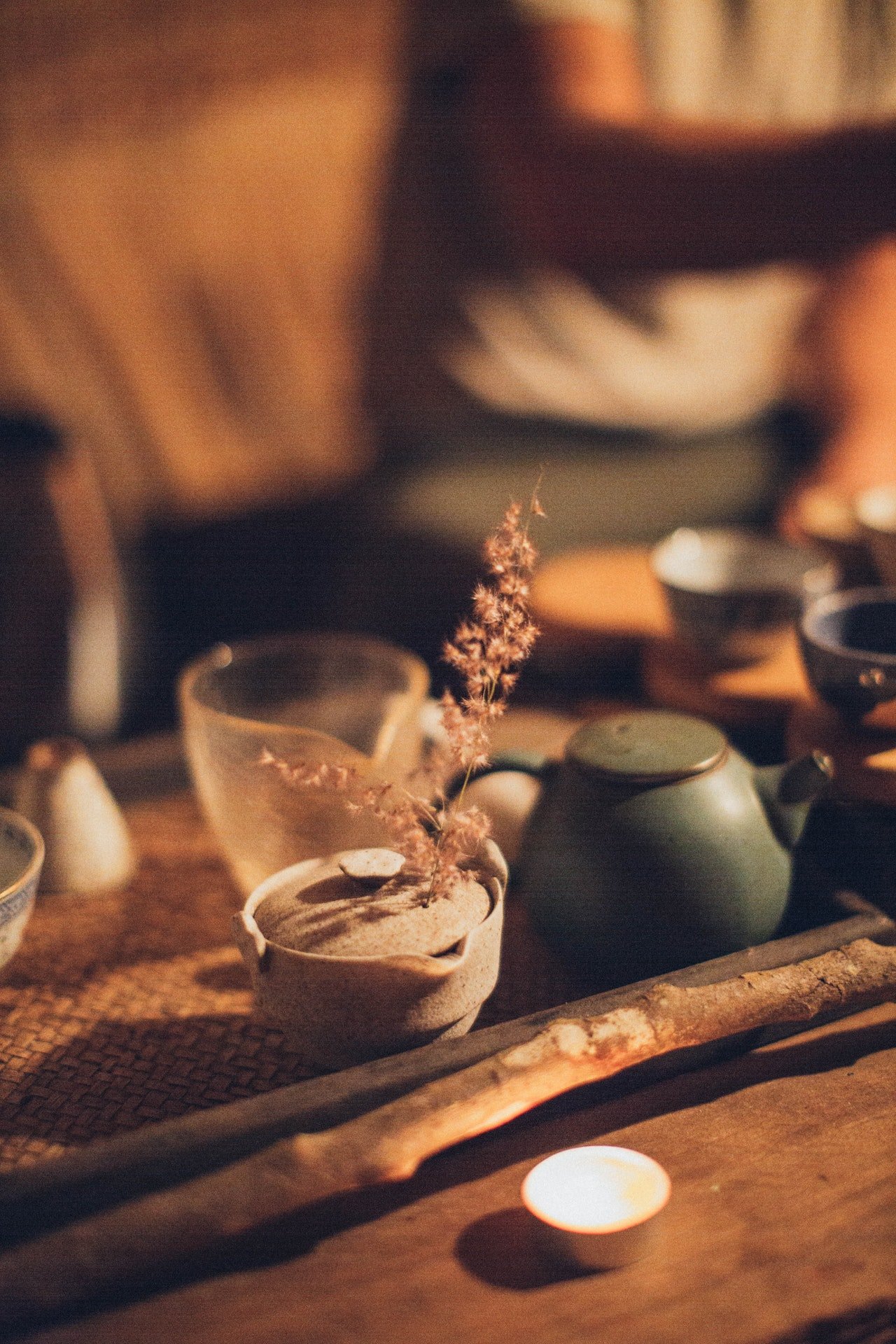A woman is stunned when she finds a carved arrow in the cradle she bought for her unborn child, and inside she finds a map that will lead her to a new life
Gina Halloran was having one of the worse, darkest days of her life. Her mother had passed away three months before, and when she’d told her boyfriend that she was pregnant, he’d told her he wasn’t ready to be a father. She was going to be a single mom like her mother.
He had suggested that Gina terminate her pregnancy, but she’d refused. Now she stood outside a second-hand furniture store, her hand pressed to her rounded belly staring at a cradle, feeling lonelier than she had ever felt in her life before. “I’m alone,” she whispered, and a tear trickled down her cheek.

For illustration purposes only. | Source: Unsplash
Just then she felt a tiny flutter in her belly, a slow surge against her hand and she smiled. She wasn’t alone, and she had her baby to think of! Raising her head resolutely she walked into the second-hand furniture store.
“Hello Mr. Torrance,” she said with a smile, “Did you get any more cradles coming in since the last time I was in?”
The store owner smiled back and gestured enthusiastically. “Yes! Come to the back, I had a beautiful cradle come in yesterday. I set it aside for you. I know you don’t like the modern ones!”
Gina followed the man and there in the back of the store was a wooden rocking cradle, delicately carved, like something out of a faerytale. “Oh it’s beautiful, Mr. Torrance!” she cried, then her face fell, “But can I afford it?”

For illustration purposes only. | Source: Unsplash
A strange expression crossed Mr. Torrance’s face. For a moment Gina wondered if he was as nice as he’d seemed, or if he was going to make some unpleasant demand.
But Mr. Torrance’s smile was back. “My dear, you can have it for $50!”
Gina gasped. “Are you sure? But… The one in the window is just plain pine and it’s $200…”
Mr.Torrance nodded. “Oh, I’m letting you have it for the price I paid my dear because I know it’s not easy being alone and expecting a baby. Just clean it properly, OK?”

For illustration purposes only. | Source: Pexels
So Gina went home delighted, and when Mr.Torrance’s employees delivered her cradle that afternoon she was over the moon. That night, after her dinner, she started cleaning the cradle, brushing away the dust, and oiling the dark wood lovingly.
It was while she was oiling the wood that she felt something odd under her fingers on the headboard. She stooped and saw a small arrow carefully carved on the headboard, where the mattress would hide it, a downward pointing arrow,
Gina ran her hand under the cradle and t felt something, something that crinkled under her probing fingers. Carefully Gina turned the cradle upside down. Under it was taped a very old envelope.
Gina opened the envelope and found inside two keys. And folded inside the envelope, Gina found a map of the town, and a red circle was carefully drawn over one particular house.

For illustration purposes only. | Source: Pixabay
As she turned over the map, she noticed some words printed in bold letters: “Use it in good health and happiness.” A treasure map? Gina felt excitement surge through her.
She could use a treasure! Gina had a job, but her boss had already told her that she would have to start looking for another as soon as her baby was born. Gina looked at the map again. “I’m going!” she said to herself, “Right now!”
Picking up her cell phone Gina called an Uber and typed in the street name and number on the map. Half an hour later she was standing outside the doors of an imposing-looking Victorian mansion.
Gina took out one of the keys she’d found in the envelope and walked up to the front door. The key slid in easily and turned with a click. The door swung open and Gina walked in.
She tried the light switch in the hall and light-flooded down from a beautiful old-fashioned chandelier. The house was beautiful! Dazzled Gina walked from room to room. The house needed some loving attention, but it was incredible!

For illustration purposes only. | Source: Unsplash
Gina walked up the ornate staircase and started exploring the top floor. There, in a room that was clearly a nursery, she was stunned to see a cradle exactly like hers, and above it a family portrait.
Gina looked up at the smiling faces of a man and a woman holding two little boys, as alike as two peas in a pod. “Twins!” she cried, “They had twins!” Kneeling down she started examining the second cradle.
She blew away the dust and saw on the headboard another arrow, and this time it pointed upwards. “Up?” she wondered aloud, “In the attic? The ceiling?” As she raised her head she found herself staring at the portrait again.
Quick as a flash, Gina was on her feet and taking down the old portrait. Behind it was a green iron safe with an ornate keyhole. Trembling, Gina took out the second key and opened the heavy door.

For illustration purposes only. | Source: Unsplash
Inside was a thick envelope, and a brown paper parcel. Gina opened the envelope with trembling fingers. It contained the deeds to the house, and in her name! She read the attached note:
“My dear Gina,” it read, “Please restore the house, and make it into a happy home again. Please keep the cradles and the old photos, they are precious family heirlooms, and yours by right.”
“Mine by right?” Gina wondered aloud, as she reached for the heavy parcel. When she opened it she was amazed to find neat bundles of $100 bills, more money than she had ever seen in her life before.
She was rich, she had a home. Gina cupped her baby bump tenderly. “Somebody loves us, baby, we are not alone!” Gina was packing everything back into the safe when she saw the photo.
It was an old-fashioned polaroid, and it showed a boy and a girl, smiling broadly, their arms around each other in front of a Ferris wheel. In her arms, the girl held a soft toy Gina recognized.

For illustration purposes only. | Source: Unsplash
It was her mother’s teddy bear, and the smiling joyful girl was her mother! Could the boy be her father? But how was this all possible? The old cradle must have been meant for her and her alone — which meant that Mr. Torrance was in on the mystery.
The next day, after depositing the money in her bank account, Gina went to talk to Mr.Torrance. At first, he hadn’t wanted to tell her anything, but at last, he admitted it. “A man came to my store, a private detective, and told me to sell you the cradle.” Mr. Torrance blushed and confessed, “He paid me $1000…”
Gina made Mr. Torrance give her the detective’s business card, and the next day she marched into his office and demanded to speak to the person who had hired him.
Three days later Gina was sitting opposite an older version of the boy from the photo. “I’m sorry Gina,” he said sadly. “I loved your mother so much, but my parents wanted me to marry a rich girl.

For illustration purposes only. | Source: Unsplash
“I was just 18, and when they found out we were in love, they sent me away to France to study. I couldn’t refuse them anything. You see, my twin brother had died, and I was all they had…”
“My mother was 16,” Gina said, “Pregnant and alone!”
Gina’s father bent his head. “I didn’t know about the baby, about you until I received a letter from your mother six months ago. I’ve been living in Europe, and after my parents died, I never returned to the States. I came back now, for you.”
Gina asked: “But why the mystery, why didn’t you call me?”
Gina’s father said sadly: “I thought you wouldn’t want to see me, for abandoning you and your mother. I thought you’d hate me…”

For illustration purposes only. | Source: Unsplash
“I need you,” Gina said, “I have no one else. I think we need each other.” Over the next few months, Gina and her father got to know each other and became good friends.
AT her next ultrasound, Gina received amazing news: she was expecting twins! She ended up using both the cradles and her father regained his lost family through her two little boys.




































































































